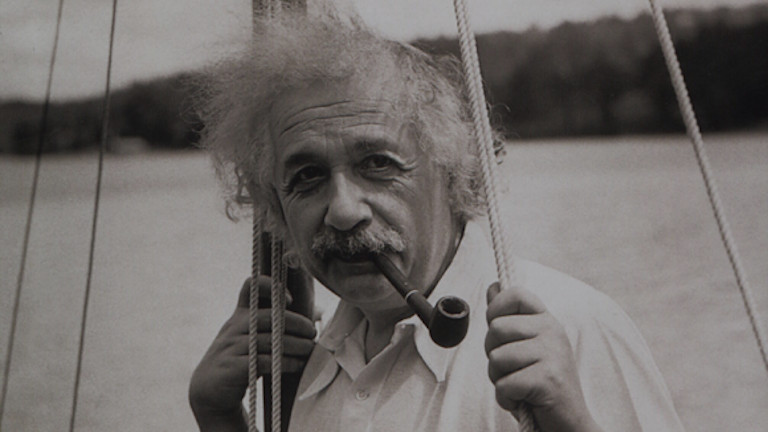His Biggest Mistakes

Hidden Variables
Einstein's biggest blunder, which he never wanted to admit, was his resistance to quantum theory. He did feel for one version: the "hidden variable theory". He hated the indeterminate nature of ordinary quantum theory, in which apparently identical quantum systems can behave very differently. The hidden variable theory contained parameters that make apparently identical quantum systems differ. The parameters are only hidden and create the illusion that the system is indeterminate. Irish physicist John Bell later showed that for the hidden variable theory to be right had to satisfy a number of mathematical inequalities. In 1982, however, French physicist Alain Aspect proved that Bell's inequalities were violated. So the hidden variable theory is wrong.
The Cosmological Constant
Shortly after Einstein published his general theory of relativity in 1915, he applied it to the entire universe to see its implications for cosmology. He soon discovered a problem. His comparisons seemed to say that the universe could not be static: it had to expand or shrink. At the time, astronomical observations seemed to show that the universe was static. Therefore, Einstein included a correction factor (the "cosmological constant") in his theory. It lifted gravity at great distances and thereby kept the universe in balance. When astronomers discovered in the late 1920s that the universe is really expanding, Einstein was upset and called the cosmological constant the "greatest blunder" of his career. However, that too was a mistake, because recently there has been renewed interest in the cosmological constant.
The Big Bang
Later, Einstein was positive about the idea that the universe may have come out of nowhere, but initially he rejected that idea. The later big bang theory was presented in 1927 by the Belgian physicist Georges Lemaître. It was based on calculations that applied the general theory. Einstein's objection was that the universe must have emerged from a singularity in which gravity is infinite, as with the singularities suspected in black holes. Einstein believed that such singularities were not physical. Later it became clear that the singularity problem was soluble, but then Einstein had to appeal to his other great gremlin, the quantum theory.